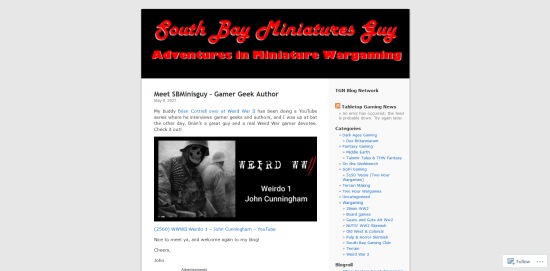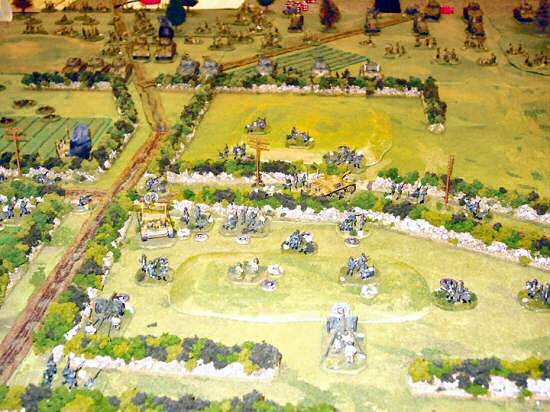I used my dark blue to very liberally cover the areas that I wanted to highlight. You can see that this ends up being most of the horse – the only places that didn't get some blue were the undersides of the belly and head, and the deep recesses of the legs, tail, and mane.

The next photo shows the result of adding some more blue to my mix. Again, I just added the amount that "felt" right. I wanted a color that looked like a small step up (in brightness and intensity) from the very dark blue. I used this new color to paint right over the dark blue, being sure to leave some of the darker color showing.

I know that I'll be using some washes/glazes to tone down and tie together the highlights, so I mix still more blue into my highlight color and hit the high spots again, once more covering a smaller area, and concentrating on high points facing my imaginary light source (above and behind the horse).

Now, I give the black parts a mid-strength wash of a mix of blue and black ink. I don't remember the formula exactly, but .5:1:1:5 (black ink:blue ink:Future:water) is probably close. The result is that the highlights I've painted on are now muted, and closer together in brightness and color. At this point, I allow the figure to sit for a while to dry – all that water takes a bit of time to evaporate (happily though, the Future helps speed the drying a bit).

Upon returning, I can see that the wash has finished the job for me. I'm happy with the way the horse looks (other than the hideous ink-shine), so I quickly glue on some flock and apply my two-step varnish (first, cheap satin; and then Testors Dullcote – or whatever equivalent I'm using). With that, the horse is all done...











